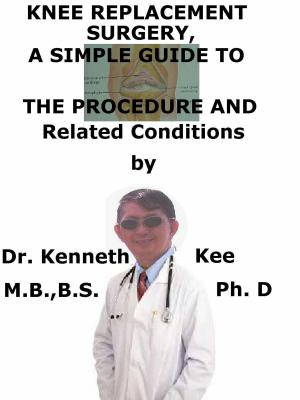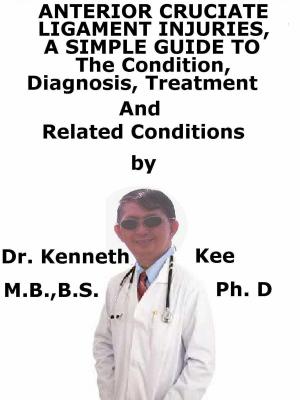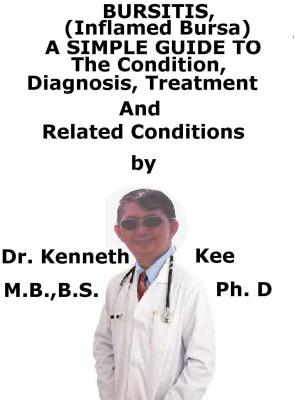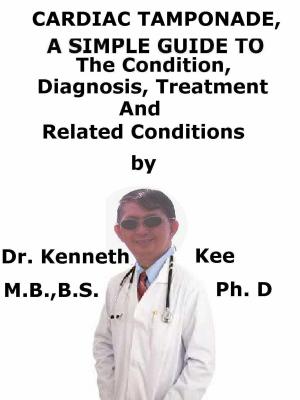Gum Disease, (Gingivitis) A Simple Guide To The Condition, Diagnosis, Treatment And Related Conditions
Nonfiction, Health & Well Being, Medical, Dentistry, Periodontics, Health, Ailments & Diseases, Oral Health| Author: | Kenneth Kee | ISBN: | 9781370880805 |
| Publisher: | Kenneth Kee | Publication: | October 18, 2016 |
| Imprint: | Smashwords Edition | Language: | English |
| Author: | Kenneth Kee |
| ISBN: | 9781370880805 |
| Publisher: | Kenneth Kee |
| Publication: | October 18, 2016 |
| Imprint: | Smashwords Edition |
| Language: | English |
Gum Disease (Gingivitis) is an acute dental disorder which produces inflammation and infection of the gums with redness, swelling and bleeding.
Gingivitis is a type of periodontal disease.
Periodontal disorder is inflammation and infection that damages the tissues that prop up the teeth.
This may be the gums, the periodontal ligaments, and the tooth sockets.
Dependent on the seriousness, gum disease is normally classified into two types - gingivitis and periodontitis.
Gingivitis
Most cases of gingivitis are produced by plaque.
This is then termed plaque-linked gingivitis.
Periodontitis
Periodontitis is literally the inflammation around the tooth.
It happens if gingivitis is worsened and continues to affect the tissue that connects the teeth to the gums (the periodontium), and the supporting bone.
As a result of periodontitis, a gap (pocket) widens between the tooth and gum.
If left not treated, the tooth may slowly become loose and ultimately drop out.
Dentists evaluate the seriousness of periodontitis by evaluating the depth of the pockets that occur between the gum and tooth.
Plaque can be eradicated from shallow pockets (up to about 3 mm deep) by brushing and clean-up teeth in a normal way.
Deeper pockets require to be treated by a dentist, as normal tooth brushing and cleaning will not get to the bottom of the pocket.
Plaque if not removed becomes a hard deposit called tartar.
Plaque and tartar (calculus) was present in more than 7 in 10 adults who had teeth.
Gingivitis occurs because of the long-term results of plaque deposits on the teeth.
Plaque is a sticky substance made of bacteria, mucus, and food debris that form on the exposed parts of the teeth.
If the patient does not get rid of plaque, it becomes a hard deposit called tartar (or calculus) that becomes caught at the base of the tooth.
Plaque and tartar aggravate and agitate the gums.
Mild gingivitis does not produce any symptoms.
The gums look slightly distended and reddened.
Moderate gingivitis can produce more noticeable swelling and reddening of the gums.
The gums often bleed a little when the patient cleans the teeth.
Diagnosis is based on:
1. Symptoms and signs of red, swollen and inflamed gums
2. Blood tests (full blood count, ESR and blood culture)
3. X-rays of teeth
Treatment is by good oral hygiene, mouth rinses, antibiotics, plaque removal and surgery for gum abscess.
In surgical treatment a dentist may clear a pocket next to a tooth where infection is there.
1.Scaling: This is the removal of calculus from above and below the gum line
2.Polishing: This is the removal of plaque and stains from the root surface.
3.Root Planing: The dentist may remove tough calculus and bacterial deposits along the smooth surface of the tooth next to the gum under local anesthesia
TABLE OF CONTENT
Introduction
Chapter 1 Gum Disease (Gingivitis)
Chapter 2 Causes
Chapter 3 Symptoms
Chapter 4 Diagnosis
Chapter 5 Treatment
Chapter 6 Prognosis
Chapter 7 Dental Decay
Chapter 8 Toothache
Epilogue
Gum Disease (Gingivitis) is an acute dental disorder which produces inflammation and infection of the gums with redness, swelling and bleeding.
Gingivitis is a type of periodontal disease.
Periodontal disorder is inflammation and infection that damages the tissues that prop up the teeth.
This may be the gums, the periodontal ligaments, and the tooth sockets.
Dependent on the seriousness, gum disease is normally classified into two types - gingivitis and periodontitis.
Gingivitis
Most cases of gingivitis are produced by plaque.
This is then termed plaque-linked gingivitis.
Periodontitis
Periodontitis is literally the inflammation around the tooth.
It happens if gingivitis is worsened and continues to affect the tissue that connects the teeth to the gums (the periodontium), and the supporting bone.
As a result of periodontitis, a gap (pocket) widens between the tooth and gum.
If left not treated, the tooth may slowly become loose and ultimately drop out.
Dentists evaluate the seriousness of periodontitis by evaluating the depth of the pockets that occur between the gum and tooth.
Plaque can be eradicated from shallow pockets (up to about 3 mm deep) by brushing and clean-up teeth in a normal way.
Deeper pockets require to be treated by a dentist, as normal tooth brushing and cleaning will not get to the bottom of the pocket.
Plaque if not removed becomes a hard deposit called tartar.
Plaque and tartar (calculus) was present in more than 7 in 10 adults who had teeth.
Gingivitis occurs because of the long-term results of plaque deposits on the teeth.
Plaque is a sticky substance made of bacteria, mucus, and food debris that form on the exposed parts of the teeth.
If the patient does not get rid of plaque, it becomes a hard deposit called tartar (or calculus) that becomes caught at the base of the tooth.
Plaque and tartar aggravate and agitate the gums.
Mild gingivitis does not produce any symptoms.
The gums look slightly distended and reddened.
Moderate gingivitis can produce more noticeable swelling and reddening of the gums.
The gums often bleed a little when the patient cleans the teeth.
Diagnosis is based on:
1. Symptoms and signs of red, swollen and inflamed gums
2. Blood tests (full blood count, ESR and blood culture)
3. X-rays of teeth
Treatment is by good oral hygiene, mouth rinses, antibiotics, plaque removal and surgery for gum abscess.
In surgical treatment a dentist may clear a pocket next to a tooth where infection is there.
1.Scaling: This is the removal of calculus from above and below the gum line
2.Polishing: This is the removal of plaque and stains from the root surface.
3.Root Planing: The dentist may remove tough calculus and bacterial deposits along the smooth surface of the tooth next to the gum under local anesthesia
TABLE OF CONTENT
Introduction
Chapter 1 Gum Disease (Gingivitis)
Chapter 2 Causes
Chapter 3 Symptoms
Chapter 4 Diagnosis
Chapter 5 Treatment
Chapter 6 Prognosis
Chapter 7 Dental Decay
Chapter 8 Toothache
Epilogue















